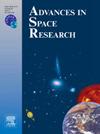Low-cost miniaturized GNSS antenna for landslide monitoring and application in Baige landslide (western China)
IF 2.8
3区 地球科学
Q2 ASTRONOMY & ASTROPHYSICS
引用次数: 0
Abstract
Global Navigation Satellite System (GNSS) technology has been widely used in landslide monitoring. However, under the influence of restrictions such as price, weight and volume, geodetic GNSS receivers and antennas are difficult to be widely used. As an alternative, the low-cost miniaturized GNSS antennas and low-cost GNSS receivers have the advantages of low cost, light weight and small size. Low-cost GNSS receivers have been proved to achieve millimeter-level accuracy in short baselines, but there is a lack of systematic discussion on the ability of miniaturized antennas for landslide monitoring. Therefore, the aim of this research is to test the actual performance of low-cost miniaturized GNSS antennas and select a miniaturized antenna with the best performance. By comparing their differences in three aspects: data quality, positioning accuracy and deformation monitoring capability, the ability of miniaturized antennas for landslide monitoring is analyzed. The results show that miniaturized GNSS antennas have lower C/N0 and higher multipath compared to survey antennas. This also leads to the miniaturized antenna having lower monitoring accuracy. However, based on the displacement monitoring results, the current monitoring accuracy of miniaturized antennas is deemed sufficient for landslide monitoring. After that, the optimal miniaturized antenna selected by the research was applied to the Baige landslide in Tibet (western China). After half a year of field monitoring, the miniaturized antenna has been verified to have a good monitoring effect in landslide monitoring. At one of the monitoring sites of the Baige landslide, a displacement of about 3 cm in the horizontal direction and 6 cm in the vertical direction was detected. In summary, miniaturized GNSS antennas have great potential in landslide monitoring.
低成本小型化GNSS天线在白葛山滑坡监测中的应用
全球卫星导航系统(GNSS)技术在滑坡监测中得到了广泛的应用。然而,受价格、重量、体积等限制因素的影响,大地GNSS接收机和天线难以得到广泛应用。作为替代方案,低成本小型化GNSS天线和低成本GNSS接收机具有成本低、重量轻、体积小的优点。低成本GNSS接收机已被证明可以在短基线下实现毫米级精度,但对于小型化天线用于滑坡监测的能力缺乏系统的讨论。因此,本研究的目的是测试低成本小型化GNSS天线的实际性能,选择性能最佳的小型化天线。通过比较它们在数据质量、定位精度和变形监测能力三个方面的差异,分析了小型化天线在滑坡监测中的能力。结果表明,小型化GNSS天线具有较低的C/N0和较高的多径。这也导致了小型化天线的监测精度较低。但从位移监测结果来看,目前小型天线的监测精度对于滑坡监测是足够的。然后,将研究选择的最优微型天线应用于西藏白葛山滑坡。经过半年的现场监测,小型化天线在滑坡监测中取得了良好的监测效果。在白歌滑坡的一个监测点,检测到水平方向位移约为3 cm,垂直方向位移约为6 cm。综上所述,小型化GNSS天线在滑坡监测中具有很大的潜力。
本文章由计算机程序翻译,如有差异,请以英文原文为准。
求助全文
约1分钟内获得全文
求助全文
来源期刊

Advances in Space Research
地学天文-地球科学综合
CiteScore
5.20
自引率
11.50%
发文量
800
审稿时长
5.8 months
期刊介绍:
The COSPAR publication Advances in Space Research (ASR) is an open journal covering all areas of space research including: space studies of the Earth''s surface, meteorology, climate, the Earth-Moon system, planets and small bodies of the solar system, upper atmospheres, ionospheres and magnetospheres of the Earth and planets including reference atmospheres, space plasmas in the solar system, astrophysics from space, materials sciences in space, fundamental physics in space, space debris, space weather, Earth observations of space phenomena, etc.
NB: Please note that manuscripts related to life sciences as related to space are no more accepted for submission to Advances in Space Research. Such manuscripts should now be submitted to the new COSPAR Journal Life Sciences in Space Research (LSSR).
All submissions are reviewed by two scientists in the field. COSPAR is an interdisciplinary scientific organization concerned with the progress of space research on an international scale. Operating under the rules of ICSU, COSPAR ignores political considerations and considers all questions solely from the scientific viewpoint.
 求助内容:
求助内容: 应助结果提醒方式:
应助结果提醒方式:


